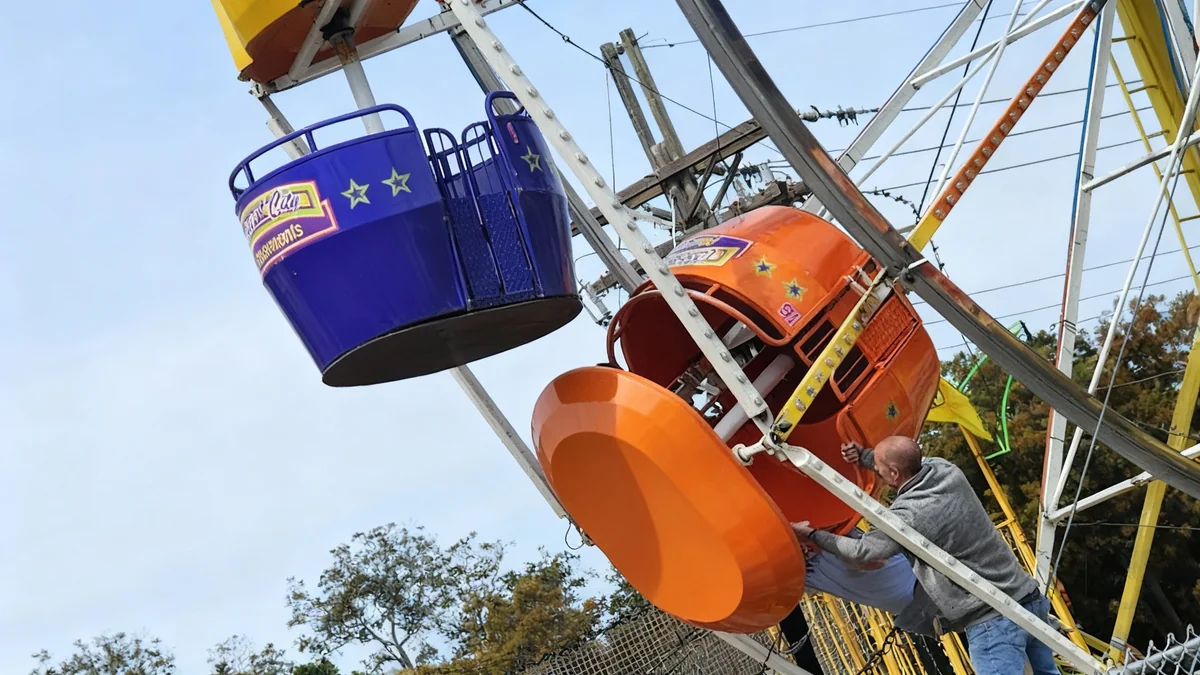A medieval tower undergoing renovation in central Rome partially collapsed on Monday, injuring multiple workers. One worker sustained serious injuries and required hospitalization, while another was temporarily trapped under debris. The incident occurred at the Torre dei Conti, a historic structure located near the city's iconic Colosseum.
Key Takeaways
- Medieval Torre dei Conti in Rome experienced a partial collapse.
- One worker was seriously injured and hospitalized.
- Another worker was trapped but later rescued.
- Two additional workers suffered minor injuries.
- The tower was undergoing a four-year renovation project.
- Multiple collapses were observed, creating significant dust clouds.
Collapse at Historic Torre dei Conti
The incident at the Torre dei Conti unfolded on Monday. Emergency services, including firefighters, responded rapidly to the scene. The tower, a significant historical landmark, is situated along the Via dei Fori Imperiali, a major avenue connecting Piazza Venezia to the Colosseum.
Rescue efforts focused on extracting a worker trapped beneath the rubble. National fire department spokesman Luca Cari described the situation as complex due to the ongoing risk of further structural failures. Teams worked carefully to ensure the safety of both the trapped individual and the rescue personnel.
Tower Facts
- Height: 29 meters (95 feet)
- Construction: Early 13th century by Pope Innocent III
- Original Height: Believed to be twice its current height
- Previous Damage: Reduced in height by earthquakes in the 14th and 17th centuries
- Current Status: Undergoing a four-year renovation project
Worker Injuries and Rescue Operations
Francesco Rocca, the regional president, confirmed that the worker hospitalized sustained serious injuries. However, these injuries were not life-threatening. Two other workers experienced minor injuries but did not require hospital treatment, declining further medical attention at the scene.
"We are trying to get him out alive but the situation is complex because of the risk of further collapses," Luca Cari, national fire department spokesman, stated regarding the rescue efforts.
Videos shared on social media and footage captured by news agencies showed at least two distinct collapses. Each event resulted in large clouds of dust billowing from the tower's windows, accompanied by the distinct sound of masonry falling.
The second collapse occurred while firefighters were actively working on the structure using aerial ladders. This highlights the hazardous conditions faced by emergency responders during the incident. Despite the collapses, the main structure of the tower remained standing, though it showed clear signs of significant internal damage.
Historical Significance
The Torre dei Conti, built for Pope Innocent III's family in the early 13th century, holds centuries of Roman history. It once served as offices for the city hall. The tower's original height was reportedly twice its current 29 meters, but it was scaled down after sustaining damage from powerful earthquakes in the 14th and 17th centuries.
Renovation Project and Public Safety
Rome city authorities confirmed that the Torre dei Conti has been out of use since 2006. It was part of a planned four-year renovation project, which was expected to conclude next year. This long-term restoration effort aimed to preserve the historic landmark.
Due to the ongoing renovation work, the area immediately surrounding the tower had been cordoned off to pedestrians. This safety measure likely prevented further injuries to tourists or passersby, as the tower is located in a highly visited part of Rome.
The partial collapse raises questions about the structural integrity of ancient buildings undergoing restoration. Authorities will likely investigate the cause of the collapse to prevent similar incidents in the future, particularly given the historical value of Rome's monuments.
The incident serves as a stark reminder of the challenges and dangers involved in preserving ancient structures. Such projects require meticulous planning and execution to ensure both the longevity of the monument and the safety of those working on or near it.
Emergency teams continue to monitor the site for any further instability. The full extent of the damage and the timeline for resuming the renovation project remain unclear as investigations begin.





